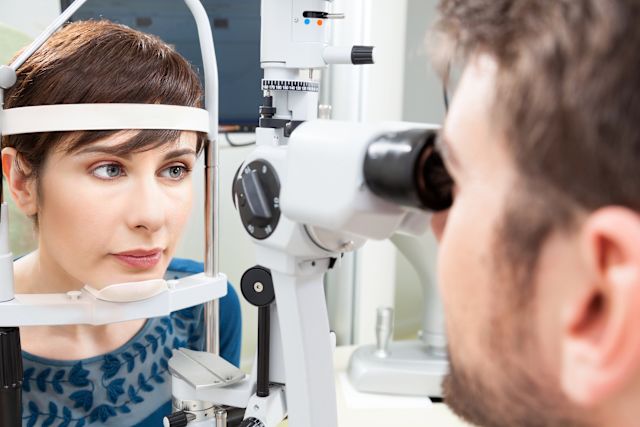Inherited retinal diseases (IRDs) are a group of eye diseases caused by a person’s genetics. As the name implies, IRDs affect the retina.
The retina is a layer of light-sensitive cells located at the back of the eye. It converts images into signals that are transmitted to the brain via the optic nerve. The retina plays an essential role in central vision and night vision. IRDs can cause severe vision loss and blindness.
IRDs occur when there are gene mutations that disrupt the normal function of the retina. Hundreds of different gene mutations associated with IRDs have been identified. Different mutations cause different IRDs and affect a person’s vision in different ways.
Types of IRDs
Here are three examples of IRDs, with a look at how they cause vision loss, how frequently they occur, and how certain IRDs may be treated.
Retinitis pigmentosa (RP)
The name retinitis pigmentosa (RP) refers to not one specific IRD, but a collection of related IRDs that cause damage to photoreceptors (also known as rods and cones). These are specialized cells in the eyes that help the eyes see in low light and bright light.
Difficulty with night vision and blind spots in peripheral vision are hallmark symptoms. It can also cause loss of central vision as well as problems seeing different colors.
Symptoms most often begin between the ages of 10 and 40 (but also occur outside these age ranges) and tend to gradually worsen with time.
Keep in mind that this is a simplified explanation of this condition—there are more than 60 different genes that can be involved in the development of RP, there are numerous subtypes of RP, the disease can follow different patterns, and it can occur as a result of multiple other genetic disorders.
It’s estimated that RP affects one out of every 3,000 or 4,000 people.
Stargardt macular degeneration
This inherited retinal disease is the most common form of juvenile macular degeneration and symptoms typically begin in late childhood or young adulthood.
The macula is the small, central part of the retina which enables central vision. When a person has Stargardt macular degeneration, deposits of fatty material accumulate around the macula.
These deposits cause damage to the cells of the macula and cause a gradual loss of central vision—making it difficult to see details clearly and impacting a person’s ability to perform everyday tasks like read and drive. It can also cause problems with night vision or seeing colors.
It is believed to affect one in every 8,000 to 10,000 people.
Choroideremia
The name choroideremia refers to the choroid, a layer of cells in the eye that is filled with blood vessels. When a person has choroideremia, gene mutations cause cells in the choroid to die prematurely and the blood vessels in the choroid to stop working normally.
Because these blood vessels supply the eye with nutrients and oxygen, cells in the retina begin to degrade. Symptoms include a loss of night vision, as well as tunnel vision and a loss of ability to see details. First symptoms typically begin in early childhood and progress over time.
Choroideremia mostly affects males. Females who carry the genetic mutations that cause choroideremia may experience mild symptoms and may not experience vision loss. It is estimated to affect one out of every 50,000 to 100,000 people.
Can IRDs be treated?
Currently there are few effective therapies available for IRDs—however, research into potential therapies is ongoing. Some of the most promising therapies in development are gene therapies, which work by replacing the abnormal genes in the eye that are causing the disease.
There is currently one FDA-approved gene therapy, which can treat IRDs caused by mutations to the RPE65 gene. This gene is associated with several IRDs, including retinitis pigmentosa.
Other therapies in development include medications that prevent the death of cells in the eyes and prosthetics that are implanted into the eye to restore vision.







